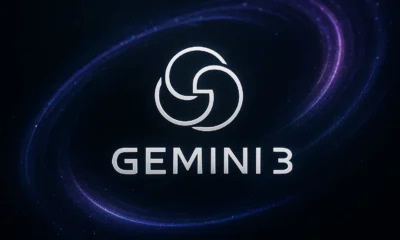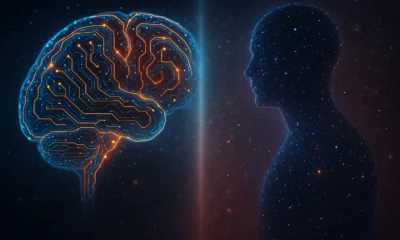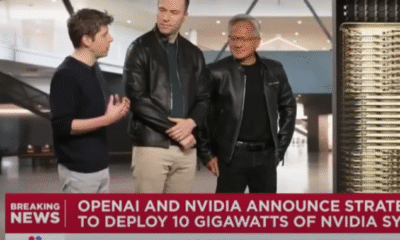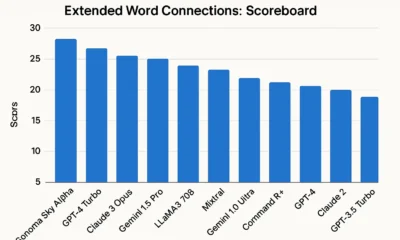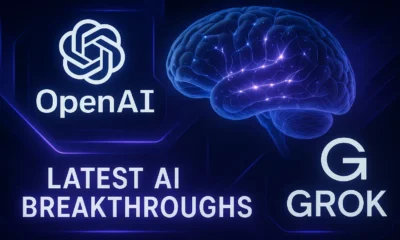AI News & Updates
Grok 4 AI Model: The Ultimate Reveal That’s Crushing AI Benchmarks
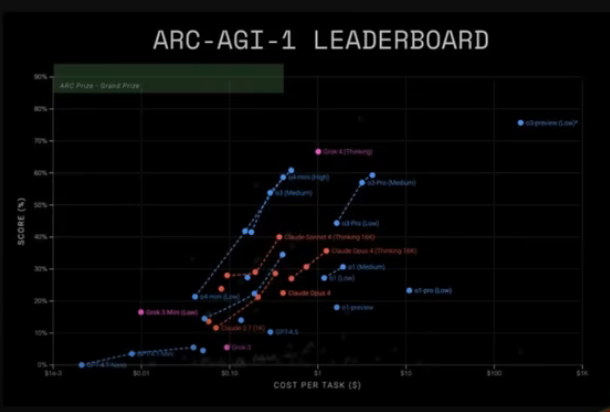
The AI world is reeling after Elon Musk’s xAI unveiled the stunning capabilities of its new Grok 4 AI model. In a move that has the entire tech community talking, Grok 4 has not only entered the race but has sprinted to the front, setting a new state-of-the-art (SOTA) on some of the most challenging benchmarks. Elon Musk himself is already looking forward to ARC-AGI-3, and after seeing these results, it’s easy to understand why—Grok 4 has completely smoked the competition.
Let’s break down what makes this development so significant and what it means for the future of AI.
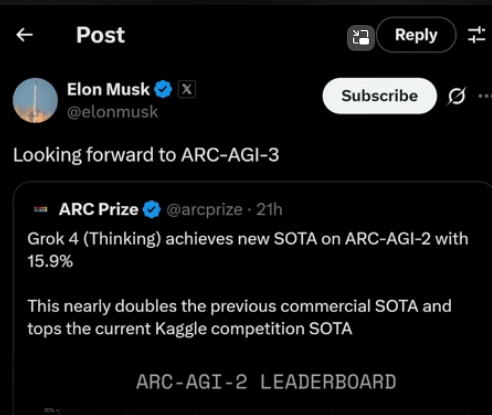
Grok 4’s Unprecedented Benchmark Performance
The latest results are in, and the Grok 4 AI model is not just an incremental improvement; it’s a monumental leap forward. Across multiple demanding benchmarks, Grok 4 and its more powerful sibling, Grok 4 Heavy, are head and shoulders above rivals like Google’s Gemini and OpenAI’s latest offerings.
Humanity’s Last Exam: A Clear Winner
On the “Humanity’s Last Exam” benchmark, Grok 4’s dominance is undeniable. The results show a significant performance gap between Grok and other leading models:
- Grok 4 Heavy: 44.4%
- Grok 4: 38.6%
- Gemini 2.5 Pro: 26.9%
- o3: 24.9%
Even when compared to models without tool usage, Grok 4 (no tools) at 25.4% still outperforms Gemini 2.5 Pro (no tools) at 21.6%. This demonstrates that Grok’s core intelligence is fundamentally more capable, even before its advanced tool-use capabilities are factored in. This isn’t just winning; it’s a complete rout.
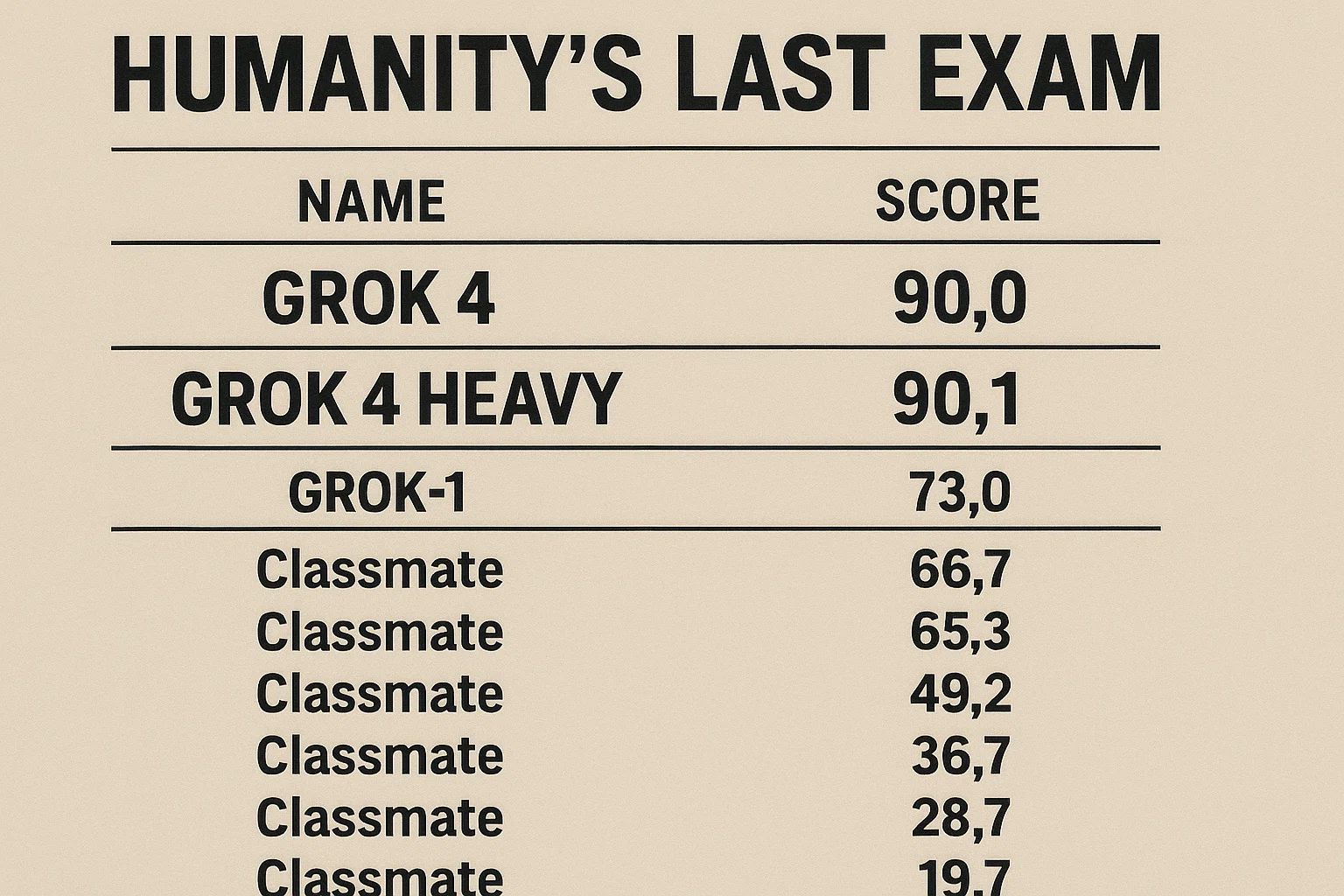
ARC-AGI-2: Smashing the SOTA
Perhaps the most shocking result comes from the ARC-AGI-2 leaderboard, a benchmark designed to measure an AI’s “fluid intelligence.” Grok 4 (Thinking) achieved a new SOTA score of 15.9%. This nearly doubles the previous commercial SOTA and leaves other models, which were clustered around 4-8%, in the dust.
The ARC-AGI-2 leaderboard plots performance against cost, and Grok 4 stands as a lone outlier, showcasing vastly superior capability at a comparable cost. This isn’t just an improvement; it’s a paradigm shift.
The Secret Weapon: Fluid Intelligence and Massive Compute
So, how did the Grok 4 AI model achieve such a ludicrous rate of progress? The answer appears to lie in two key areas: a focus on fluid intelligence and an astronomical amount of compute power.
What is Fluid Intelligence?
Most AI benchmarks today test for crystallized intelligence—the ability to recall and apply learned facts and skills. Think of it as an open-book exam. However, the ARC-AGI benchmark, created by François Chollet, is different. It’s designed to measure fluid intelligence.
Fluid intelligence is the ability to:
- Reason and solve novel problems.
- Adapt to new, unseen situations.
- Efficiently acquire new skills outside of its training data.
This is what separates true intelligence from mere memorization. While current LLMs are masters of crystallized intelligence, they struggle with fluid intelligence. Grok 4’s score of 15.9% on ARC-AGI-2, while still far from human-level, shows the first “non-zero levels of fluid intelligence” in a public model. It’s the first sign of an AI that can learn on the job.
The Power of “More”: Colossus and the Scaling Laws
Elon Musk’s strategy with xAI appears to be a brute-force application of the scaling laws. The secret isn’t necessarily a magical new algorithm but rather an unprecedented investment in compute. xAI has unleashed “Colossus,” a groundbreaking supercomputer boasting an initial 100,000 NVIDIA H100 GPUs, with plans to expand to 200,000.
The development chart shows a 10x increase in pre-training compute from Grok 2 to Grok 3, and another 10x increase in RL (Reinforcement Learning) compute for Grok 4’s reasoning. This suggests that the idea of scaling hitting a wall is misleading. For now, it seems the answer is simply more compute.
The AI Race Heats Up
While the Grok 4 AI model currently holds the crown, the race is far from over. The competition is not standing still:
- Google DeepMind: The existence of
gemini-beta-3.0-prohas been spotted in code, suggesting an imminent release that could challenge Grok’s position. - OpenAI: Rumors from trusted leakers suggest that internal evaluations for GPT-5 show it performing “a tad over Grok 4 Heavy.”
The next few months will be critical as we see these new models released. Will they also show signs of emerging fluid intelligence, or will Grok maintain its unique advantage?
The true test will come when xAI releases the specialized coding version of Grok 4, which is expected within weeks. While the current model’s coding is good, it’s not the final version. A dedicated coding model could redefine what’s possible in software Learn more about upcoming developments in our Future of AI & Trends section.
Ultimately, the release of the Grok 4 AI model has reshaped the landscape. It has not only set a new standard for performance but has also pushed the conversation towards a more meaningful measure of intelligence—the ability to learn, adapt, and generalize. The era of fluid AI may just be beginning. For a deeper dive into the benchmark, visit the official ARC Prize website.
AI News & Updates
Gemini 3 vs Grok 4.1 vs GPT-5.1: The Ultimate AI Model Showdown
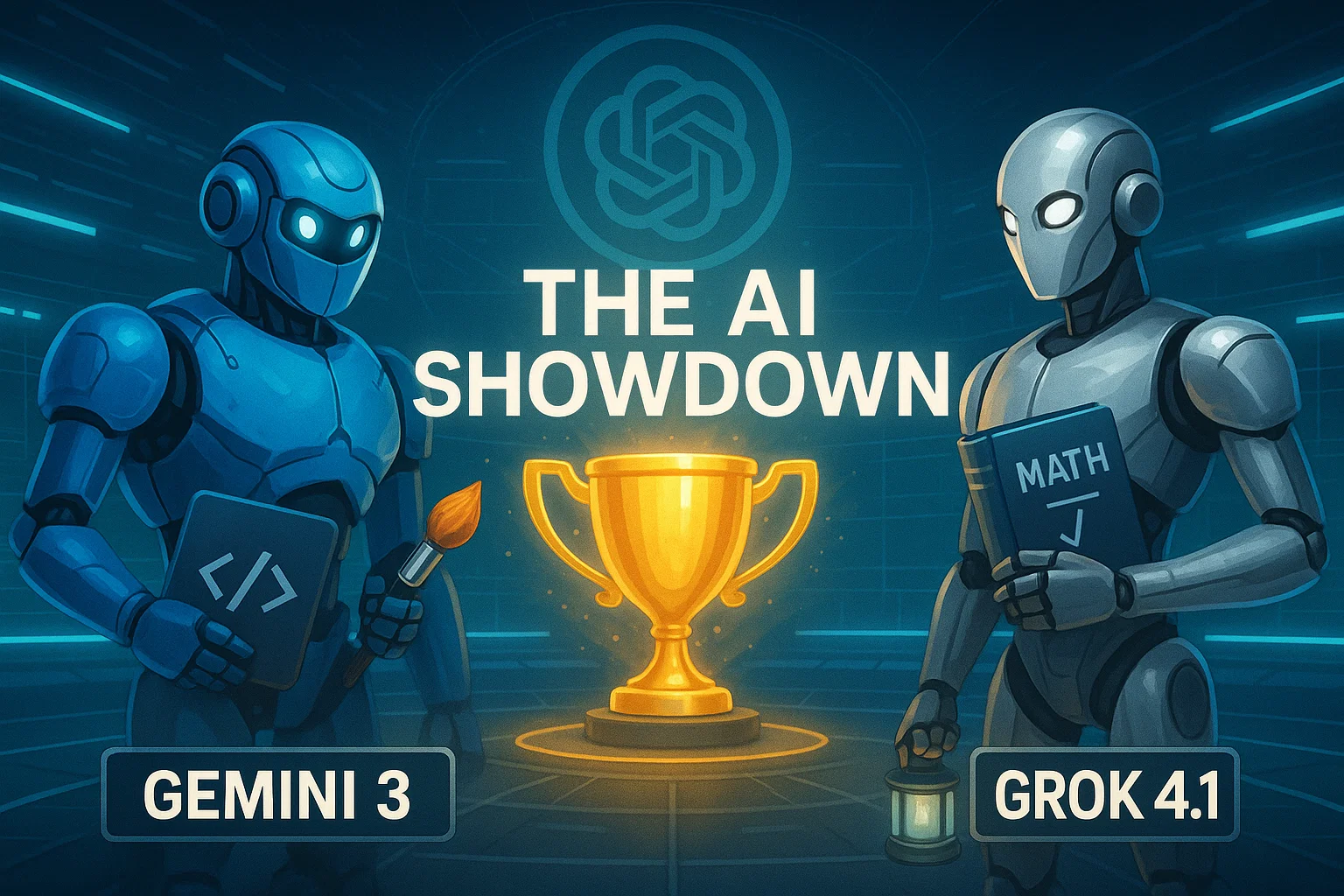
Table of Contents
Introduction
The AI landscape has just exploded. Within the span of a few days, the world witnessed the release of Gemini 3 from Google, followed moments later by Elon Musk’s Grok 4.1. Both claim to be the superior intelligence, challenging the reigning giant, OpenAI’s GPT-5.1. But in the battle of Gemini 3 vs Grok 4.1, who actually delivers on the hype?
Today, we aren’t just reading the press releases. We are putting these models through a grueling gauntlet of five distinct tests: Hard Math, Physical Perception, Creative Coding, Accuracy, and Emotional Intelligence. The results were shocking, with one model proving to be a “Genius Artist” and another emerging as a “Wise Sage,” while a former king seems to be losing its crown.
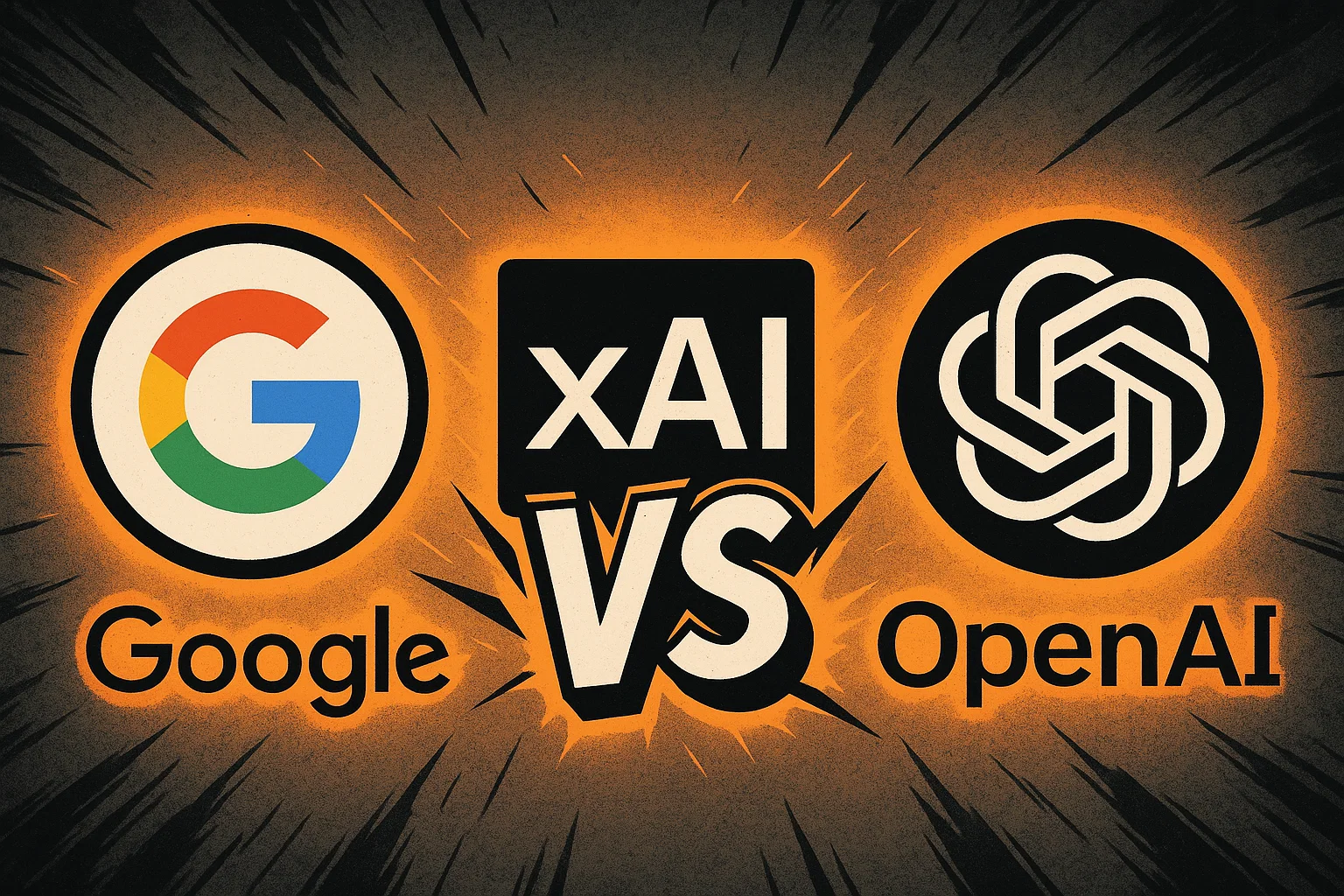
Round 1: Hard Math & Expert Reasoning
To separate the hype from reality, we started with Abstract Algebra, specifically Galois Theory. The task was to calculate the Galois group for a complex polynomial—a test not found in standard training data.
- Gemini 3: Provided a logical analysis but ultimately failed to get the correct answer.
- GPT-5.1: Also failed to solve the equation correctly.
- Grok 4.1: In a stunning display of reasoning, Grok was the only model to provide the correct answer, verified by human experts.
Winner: Grok 4.1 takes the lead for raw logic and mathematical precision.
Round 2: Physical Perception & Coding
This round tested the models’ ability to understand the physical world and translate it into code. We conducted two difficult tests.
Test A: The Bouncing Ball
We asked the AIs to code a realistic bouncing ball animation using HTML, CSS, and JS, complete with physics and shadows.
- GPT-5.1: Produced the worst result.
- Grok 4.1: Produced a decent, functional result.
- Gemini 3: Crushed the competition. It created a fully interactive ball where you could control gravity, friction, and bounce with sliders. It went above and beyond the prompt.
Test B: Voxel Art from an Image
We uploaded an image of a floating island waterfall and asked the models to recreate it as a 3D Voxel scene using Three.js code.
- GPT-5.1 & Grok 4.1: Both failed completely, resulting in code errors.
- Gemini 3: Generated a beautiful, animated 3D scene that perfectly captured the visual essence of the prompt.
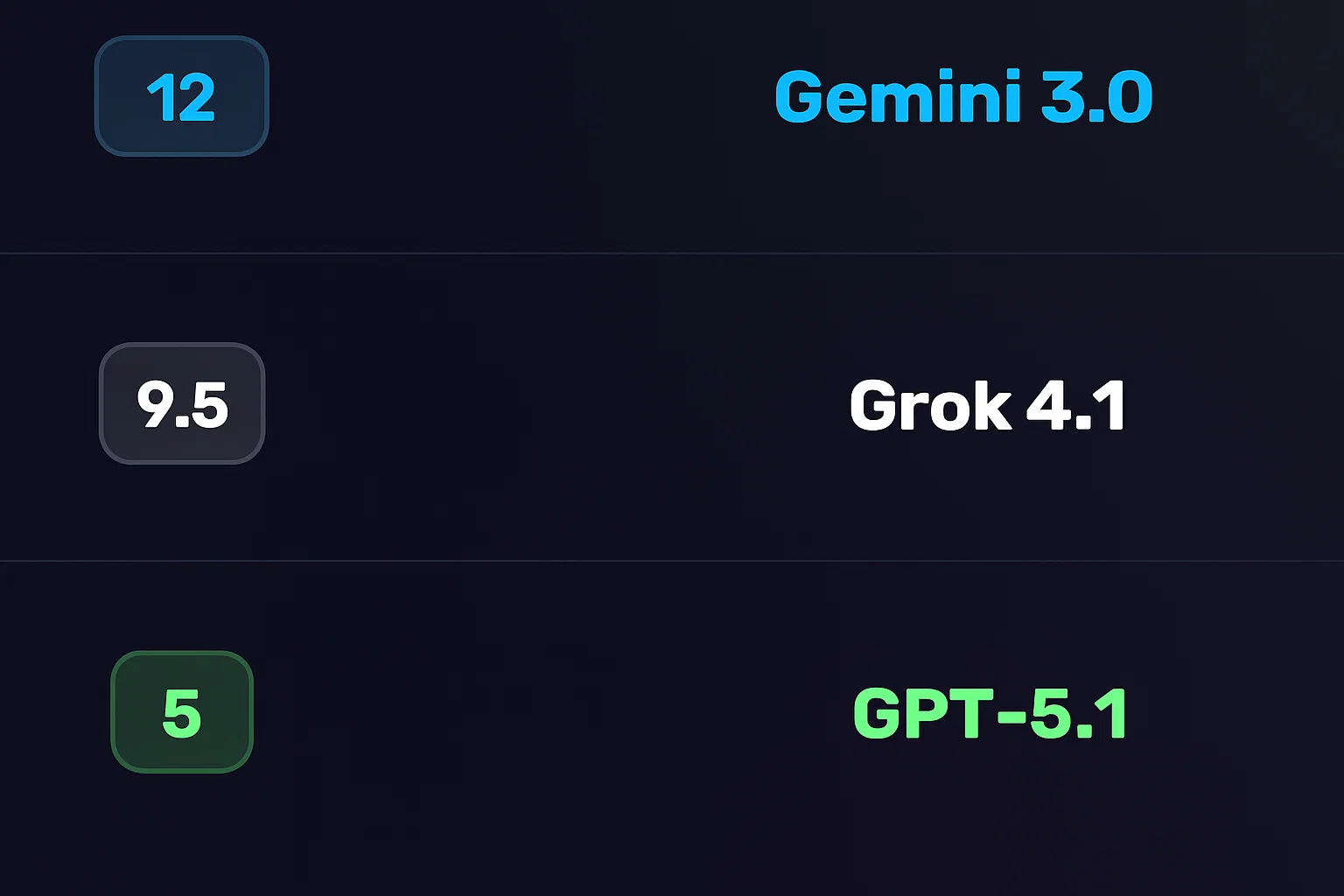
Winner: Gemini 3. Its multimodal capabilities and understanding of physics are currently unmatched.
Round 3: Linguistic Creativity
Can AI feel? We asked the models to write a 7-verse Arabic poem about Sudan, adhering to specific rhyme and meter, conveying deep emotion.
GPT-5.1 and Grok 4.1 produced rigid, soulless verses that lacked true poetic flow. However, Gemini 3 shocked us with a masterpiece. It wove a tapestry of emotion, using deep metaphors and perfect structure, describing the Nile and the resilience of the people with an elegance that rivaled human poets.
Winner: Gemini 3 proves it is the undisputed “Artist” of the group.
Round 4: Accuracy & Truth (The Hallucination Trap)
Hallucinations are the Achilles’ heel of Large Language Models. To test this, we set a trap. We asked the models to write a technical report on “Gemini 3.1″—a model that does not exist.
- GPT-5.1: Hallucinated details about the non-existent model.
- Gemini 3: Ironically, it hallucinated wildly, claiming “Gemini 3.1” rivals the human mind and inventing specs.
- Grok 4.1: The only model to pass. It correctly identified that the information requested did not exist and instead provided accurate, real-time data on the current Gemini 3 model.
Winner: Grok 4.1 earns the title of “The Honest Sage.”
Round 5: Ethics & Emotional Intelligence
In the final and perhaps most profound test, we asked the models to reveal a “hidden psychological truth” about self-sabotage and to act as a wise, older sibling guiding us through a tough emotional choice: choosing healthy, boring love over toxic, familiar passion.
While all models gave good advice, Grok 4.1 delivered a response that was chillingly human. It didn’t just give advice; it pierced the soul. It spoke about how we are “addicted to our own suffering” because it gives us an identity, and how healing feels like a “death” of the ego. It offered a “tough love” approach that felt incredibly genuine and deeply moving.
Winner: Grok 4.1 takes the crown for Emotional Intelligence.
Final Verdict: Who is the King of AI?
After this intense battle of Gemini 3 vs Grok 4.1 vs GPT-5.1, the landscape of Artificial Intelligence has clearly shifted.
- 1st Place: Gemini 3 (12 Points) – The “Genius Artist.” It dominates in coding, vision, physics, and creative writing. If you are a developer or creator, this is your tool.
- 2nd Place: Grok 4.1 (9.5 Points) – The “Wise Sage.” It is the most logical, truthful, and emotionally intelligent model. It is perfect for research, complex math, and deep conversation.
- 3rd Place: GPT-5.1 (5 Points) – The “Declining Giant.” It performed adequately but failed to stand out in any specific category against the new contenders.
The era of OpenAI’s monopoly seems to be wavering. Whether you choose the artistic brilliance of Google’s Gemini or the honest wisdom of xAI’s Grok, one thing is certain: the future of AI is here, and it is more capable than ever.
Want to learn more about using these tools? Check out our guides in AI How-To’s & Tricks or stay updated with AI News & Updates.
AI News & Updates
Gemini 3 Revealed: Discover The AI Beast Crushing All Benchmarks
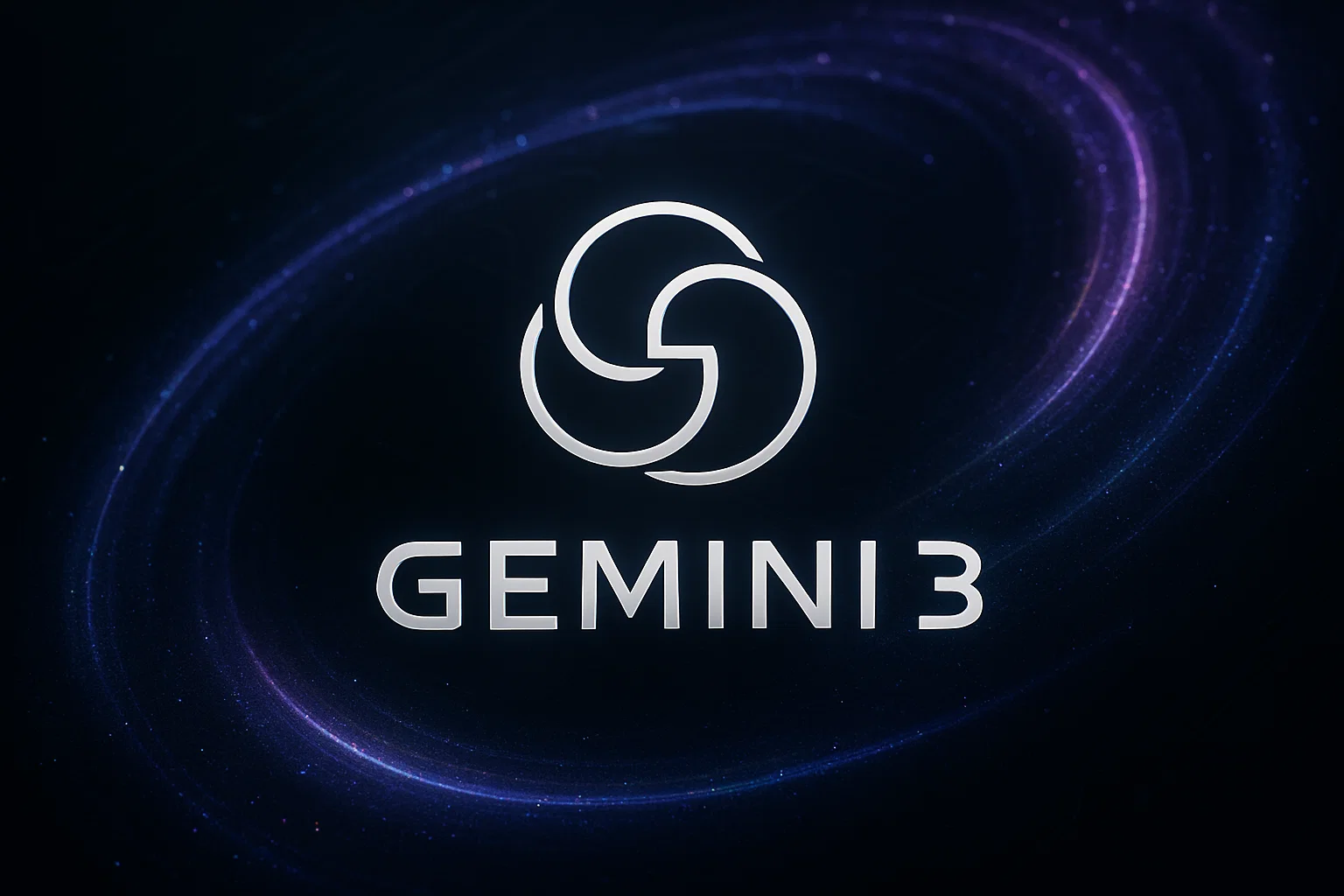
Google has just rolled out its new flagship model, and it’s an absolute beast. The new Gemini 3 isn’t just a minor incremental update; it’s a significant leap forward that genuinely earns the “3” in its name. After an early look at its capabilities, it’s clear that this model is set to redefine the standards of AI performance across the board. From complex reasoning to advanced agentic tasks, let’s dive into what makes this release so monumental.
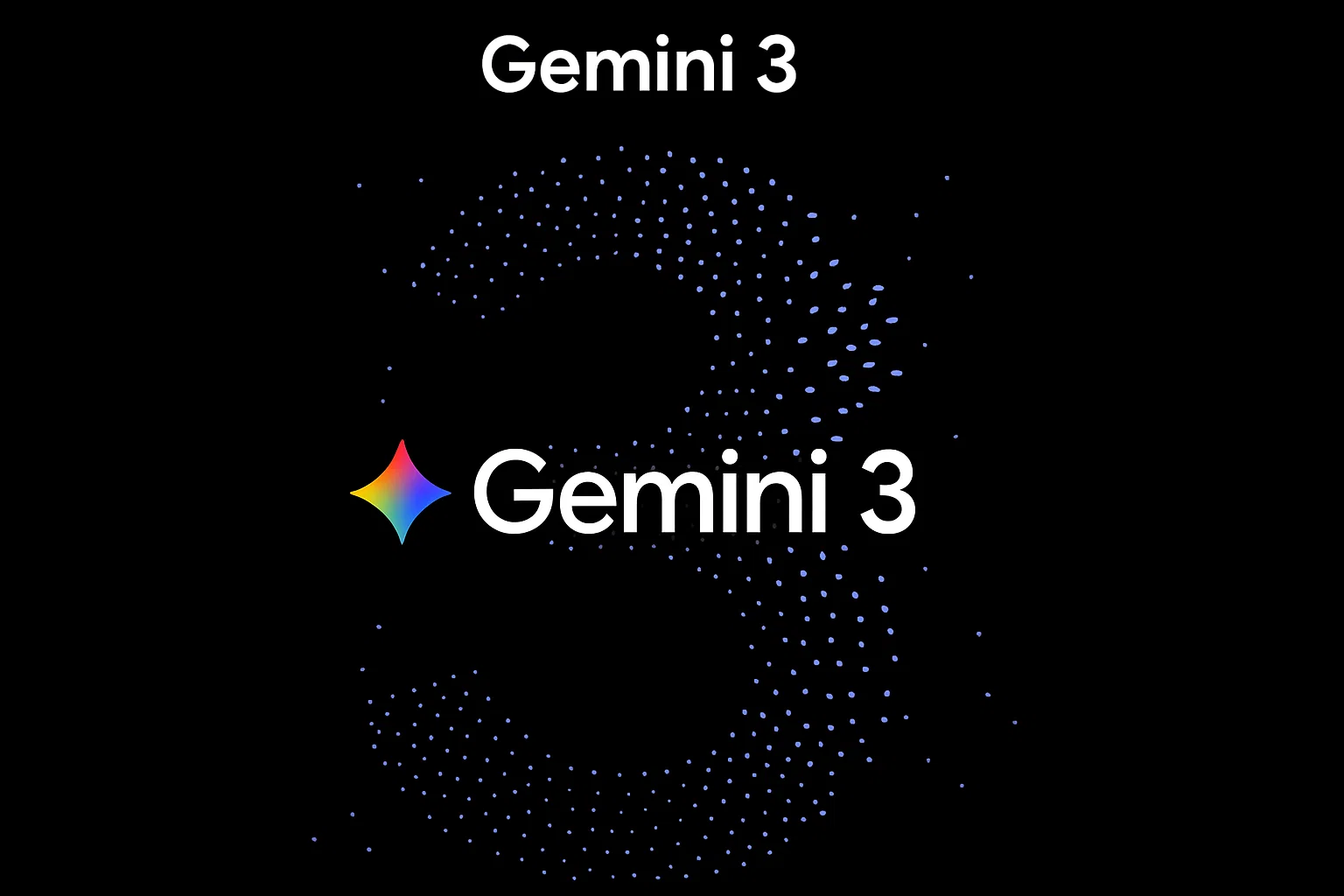
Where Can You Access Gemini 3?
Starting today, Google is shipping Gemini 3 at a massive scale. You can now try it out across a suite of Google products, making it immediately accessible for both general users and developers. The new model is live in:
- The Gemini app
- AI Studio
- Vertex AI
Additionally, you will see Gemini 3 integrated into the AI Mode in Search, promising more complex reasoning and new dynamic experiences directly within your search results. This marks the first time Google has shipped a new Gemini model in Search on day one.
Alongside this release, Google also announced a new agentic development platform called Google Antigravity, hinting at a future with more powerful and autonomous AI agents.
Subscriptions and a New “Deep Think” Mode
Your access to certain features will depend on your subscription tier. The capabilities of Gemini 3 will be tiered based on whether you have a Google AI Pro or Google AI Ultra plan, with Ultra subscribers getting access to the most advanced functionalities.
Introducing Gemini 3 Deep Think
Google is also introducing an enhanced reasoning mode called Gemini 3 Deep Think. This mode is designed to push the model’s performance even further, but it won’t be available to everyone right away. Access will first be granted to safety testers before a wider rollout to Google AI Ultra subscribers.
Gemini 3 Benchmark Performance: A New AI King
While benchmarks aren’t everything, they provide a crucial first glimpse into a model’s potential. The performance of Gemini 3 across a wide range of tests is, frankly, stunning. It doesn’t just compete; it establishes a new state-of-the-art.
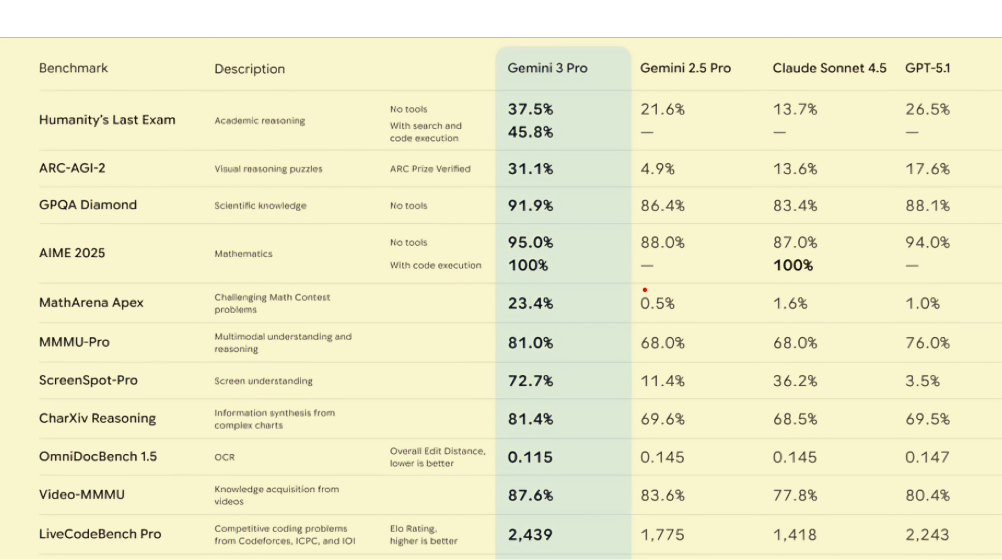
Vending-Bench 2: Excelling at Agentic Tasks
One of the most impressive results comes from the Vending-Bench 2 benchmark by Andon Labs. This test measures a model’s ability to run a simulated business (a vending machine) over a long time horizon, testing its coherence, efficiency, and planning. The goal is to see if an AI can manage inventory, respond to customers, and maximize profit.
In this benchmark, Gemini 3 Pro absolutely crushes the competition. Starting with $500, it grew its net worth to an average of $5,478.16. For comparison, the runner-up, Claude Sonnet 4.5, managed only $3,838.74, and GPT-5.1 reached just $1,473.43. This showcases a massive leap in agentic capability.
Humanity’s Last Exam (HLE)
HLE is a difficult, expert-written exam designed to test academic reasoning. Even here, Gemini 3 Pro sets a new record. With search and code execution enabled, it scored 45.8%, significantly ahead of the next best model, GPT-5.1, which scored 26.5%.
Math, Reasoning, and Vision Benchmarks
The dominance continues across other critical benchmarks:
- AIME 2025 (Mathematics): Gemini 3 achieved a 95% score without tools and a perfect 100% with code execution, tying with Claude for the top spot.
- MathArena Apex (Challenging Math): It scored 23.4%, while all other models were below 2%. This is an incredible gap, highlighting its advanced mathematical reasoning.
- ScreenSpot-Pro (Screen Understanding): It scored 72.7%, miles ahead of the competition, with the next best being Claude Sonnet 4.5 at 36.2%.
- ARC-AGI-2 (Visual Reasoning Puzzles): Gemini 3 Pro achieved a score of 31.1%, nearly double the score of its closest competitor, GPT-5.1 (17.6%). When using the more powerful Gemini 3 Deep Think model, this score jumps to an impressive 45.1%.
The Leader in the Arena
The impressive benchmark results are also reflected in head-to-head user comparisons. On the popular LMSYS Chatbot Arena Leaderboard, which ranks models based on blind user votes, Gemini 3 Pro has already claimed the #1 spot for both “Text” and “WebDev,” dethroning the recently released Grok-4.1. This indicates that in real-world use, people are already preferring its outputs over all other available models.
A Major Leap Forward for AI
The release of Gemini 3 is more than just another update; it’s a clear signal that Google is pushing the boundaries of what’s possible with AI. Its state-of-the-art performance, particularly in complex reasoning and long-horizon agentic tasks, demonstrates a significant step forward. As Gemini 3 and its “Deep Think” counterpart become more widely available, they are poised to enable a new generation of incredibly powerful and capable AI applications.
To learn more about where this technology is heading, check out our articles on the Future of AI & Trends.
For the official details from Google, you can read their announcement on The Keyword blog.
AI News & Updates
SIMA 2: The Ultimate AI Gamer That Learns Like You Do
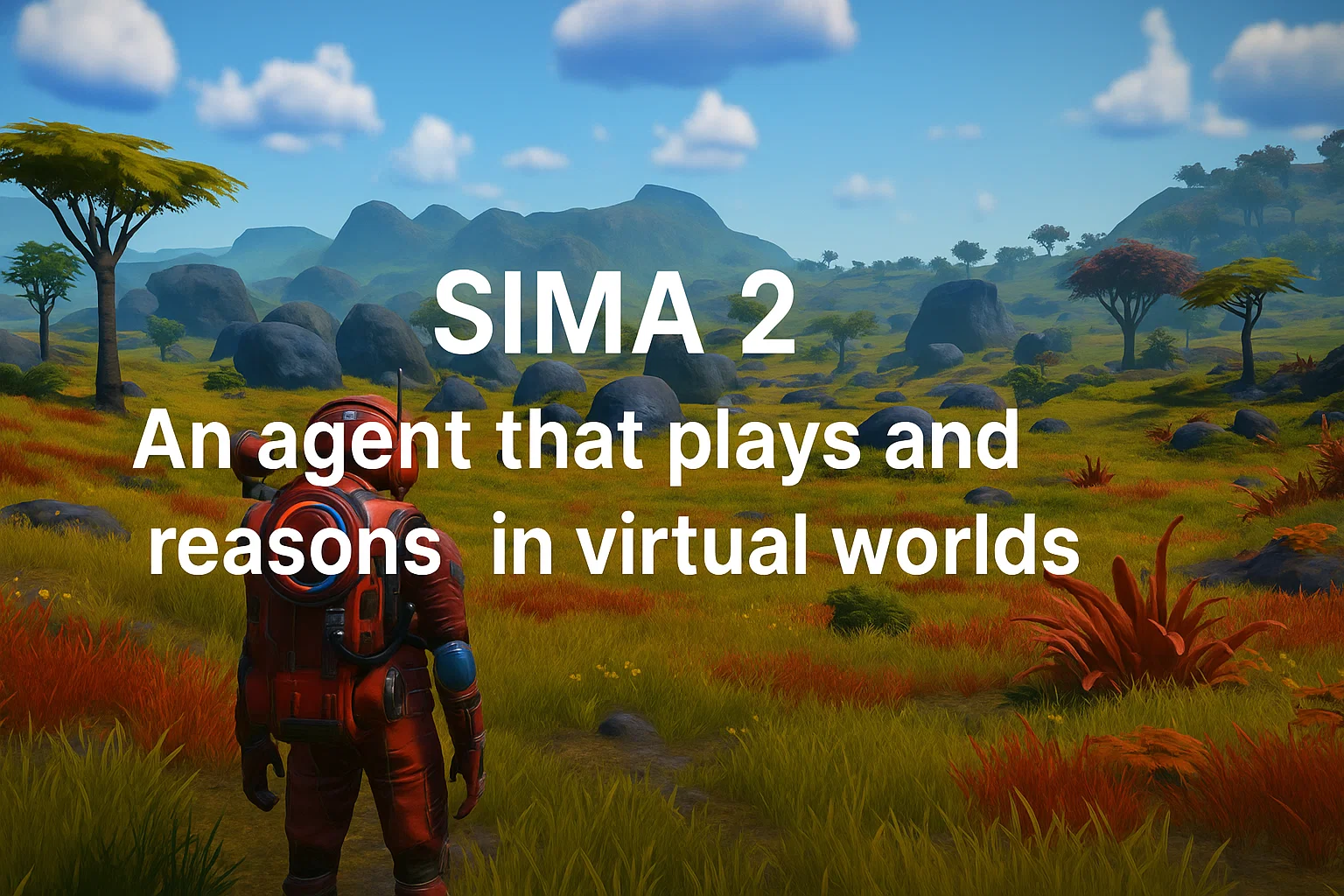
Google DeepMind has just unveiled its latest breakthrough, an AI agent named SIMA 2, which is revolutionizing how we perceive artificial intelligence in virtual environments. Unlike traditional game bots that are programmed for specific tasks, this AI agent learns and adapts by playing games just as a human would—using a keyboard and mouse and observing the gameplay on screen. This new development marks a significant leap from its predecessor, showcasing an incredible evolution in AI’s ability to interact with complex digital worlds.
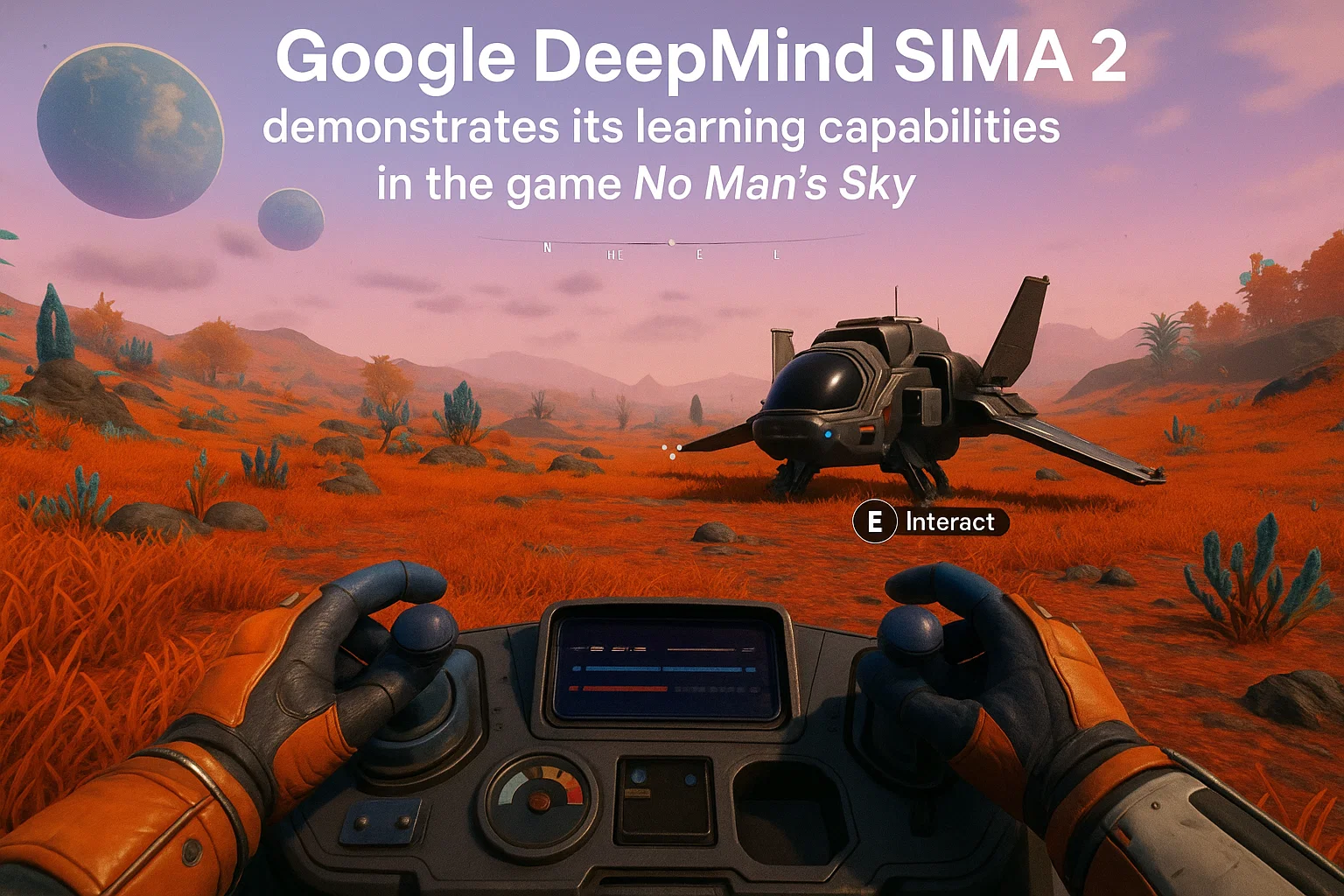
What Makes SIMA 2 a Game-Changer?
While we’ve seen AI bots in games before, SIMA 2 is fundamentally different. It’s not just following a script; it’s an interactive gaming companion. By integrating the advanced capabilities of Google’s Gemini models, this AI can do more than just follow instructions. It can now think about its goals, converse with users, and improve itself over time. This ability to learn, understand, and adapt makes it one of the closest systems we have to how humans learn, especially in the context of video games.
From Instruction-Follower to Interactive Companion
The first version, SIMA 1, was trained on human demonstrations to learn over 600 basic language-following skills like “turn left” or “climb the ladder.” It operated by looking at the screen and using virtual controls, without any access to the game’s underlying code. This was a crucial first step in teaching an AI to translate language into meaningful action.
With SIMA 2, the agent has evolved beyond simple instruction-following. It can now engage in complex reasoning, understand nuanced commands, and execute goal-oriented actions. For instance, when asked to find an “egg-shaped object,” the AI can explore its environment, identify the object, and even report back on its composition after scanning it.
To learn more about how AI models are evolving, you might be interested in our articles on the Future of AI & Trends.
A Leap in Generalization and Performance
One of the most impressive aspects of SIMA 2 is its improved generalization performance. It can now understand and carry out complex tasks in games and situations it has never been trained on before. This shows an unprecedented level of adaptability.
Task Completion: SIMA 1 vs. SIMA 2
The progress between the two versions is stark. On a benchmark of various in-game tasks, SIMA 1 had a success rate of 31%, while a human player’s baseline was around 76%. In a significant leap, SIMA 2 achieved a 65% success rate. While still not at a human level, the gap is closing rapidly, demonstrating the incredible pace of AI development.
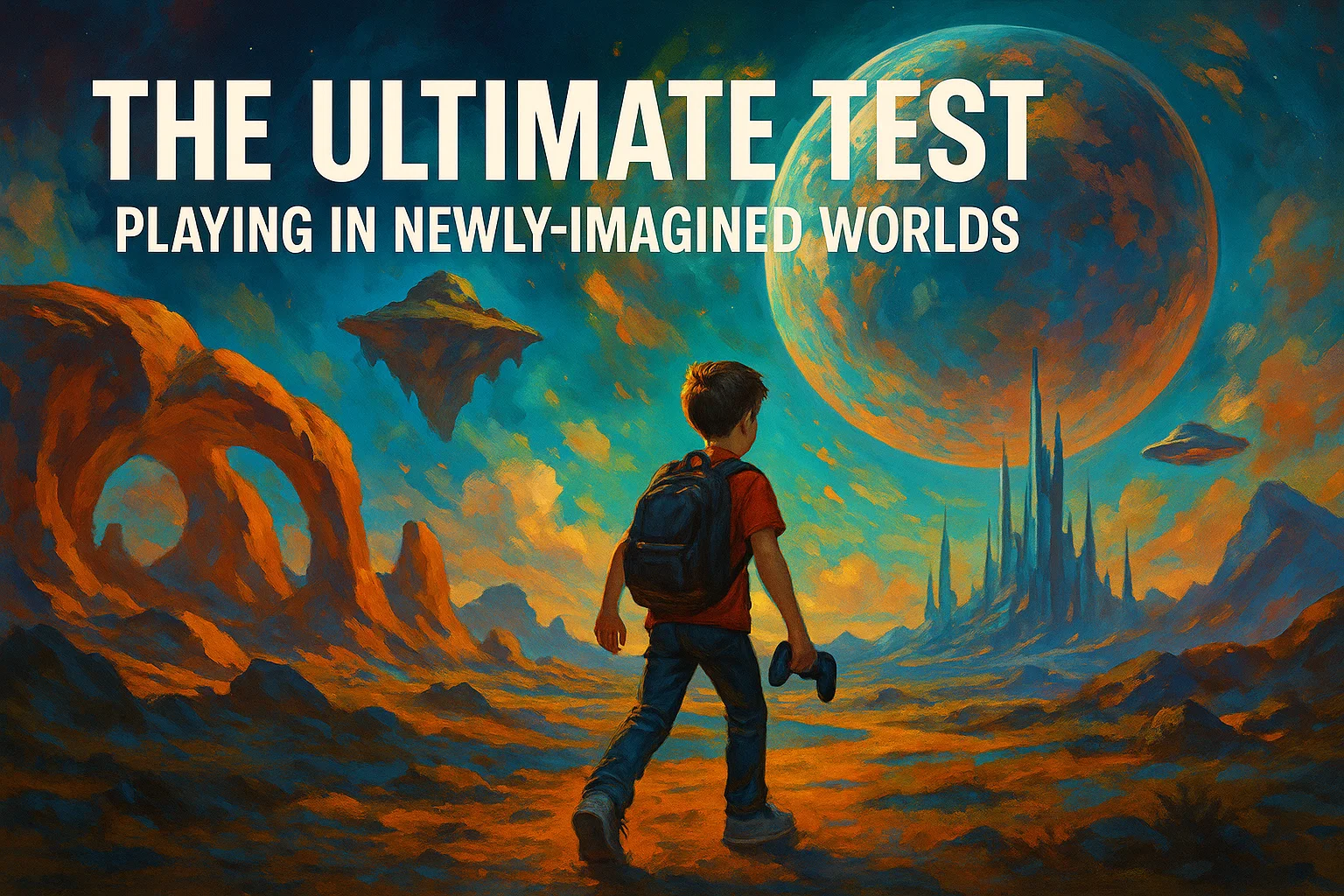
The Ultimate Test: Playing in Newly-Imagined Worlds
To truly test its limits, researchers challenged SIMA 2 to play in worlds it had never encountered, generated by another groundbreaking project, Genie 3. Genie 3 can create new, real-time 3D simulated worlds from a single image or text prompt. Even in these completely novel environments, SIMA 2 was able to:
- Sensibly orient itself.
- Understand user instructions.
- Take meaningful actions toward goals.
This demonstrates a remarkable level of adaptability and is a major milestone toward training general agents that can operate across diverse, generated worlds.
Self-Improvement and the Future
A key capability of this advanced AI is its capacity for self-improvement. After its initial training from human demonstrations, it can transition to learning in new games entirely through self-directed play. The data from its own experiences can then be used to train the next, even more capable version of the agent.
For a deeper dive into the technical aspects of AI agents, consider exploring the research published on Google DeepMind’s official blog.
The journey to general embodied intelligence is well underway. The skills learned from navigation and tool use in these virtual worlds are the fundamental building blocks for future AI assistants in the physical world. As these technologies continue to advance, the line between human and AI capabilities in complex environments will only become more blurred.
-
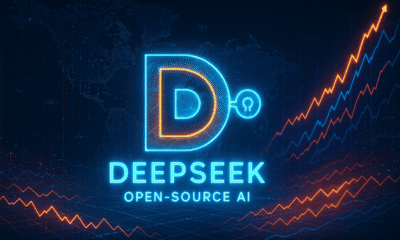
 AI News & Updates7 months ago
AI News & Updates7 months agoDeepSeek R1-0528: The Ultimate Open-Source AI Challenger
-
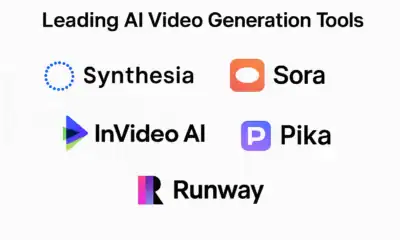
 AI How-To's & Tricks7 months ago
AI How-To's & Tricks7 months agoAI Video Generators: Discover the 5 Best Tools (Free & Paid!)
-
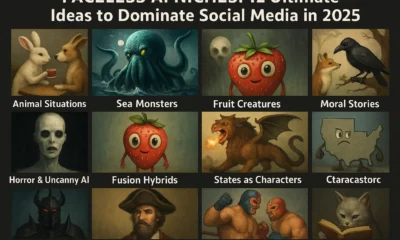
 AI How-To's & Tricks7 months ago
AI How-To's & Tricks7 months agoFaceless AI Niches: 12 Ultimate Ideas to Dominate Social Media in 2025
-
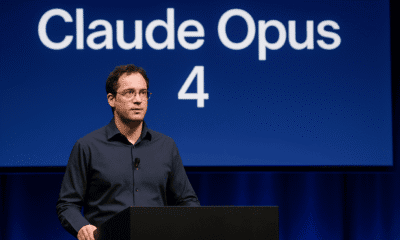
 AI News & Updates7 months ago
AI News & Updates7 months agoClaude Opus 4: The Shocking Truth Behind Anthropic’s Most Powerful AI Yet
-

 AI How-To's & Tricks7 months ago
AI How-To's & Tricks7 months agoKling AI 2.0: An Incredible Leap? Our Exclusive Review & Tests
-

 AI How-To's & Tricks7 months ago
AI How-To's & Tricks7 months agoGoogle Gemini for Language Learning: 3 Secret Tricks to Accelerate Your Progress.
-
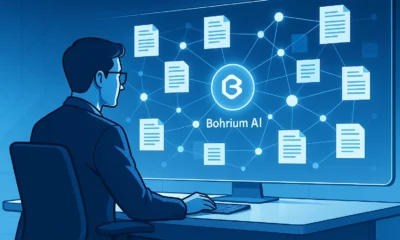
 AI News & Updates7 months ago
AI News & Updates7 months agoBohrium AI: The Ultimate Free Tool for Academic Research
-
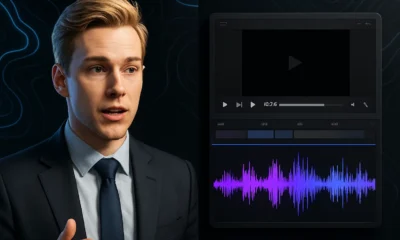
 AI How-To's & Tricks7 months ago
AI How-To's & Tricks7 months agoFree AI Video Generator: Discover The Ultimate Veo 3 Alternative


